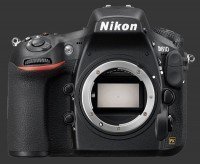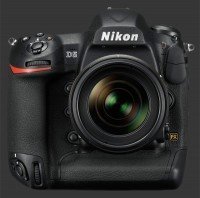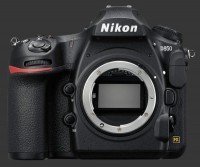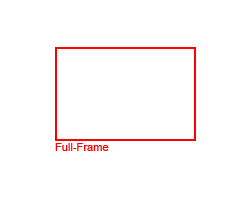Nikon D850 Review
Nikon D850 Performance - How well does it take pictures?
Ultimately, it is the image quality that makes a camera worth buying. For a digital SLR, image quality greatly depends on the lens used. While color, noise, contrast and exposure are properties of the camera, distortion, vignetting and chromatic aberrations are properties of the lens. Sharpness depends on the weakest link. So, the camera cannot capture more details than the lens lets through. Conversely, a lens can transmit a greater amount of details than the sensor can capture.

Image Noise & Sharpness
The Nikon D850 boasts the second highest resolution for a full-frame camera, 46 MP which is right behind the Canon 5DS twins which offer 50 MP. At such high resolutions, the D850 has smaller pixels than most APS-C cameras, creating an unusual reversal of characteristics. What the Full-Frame sensor always keeps in its favor though, is a larger surface area and light gathering capability. Only a handful of Medium Format cameras offer larger sensors at similar resolutions.
Image quality from the Nikon D850 is defined by its resolution. Noise just starts becoming visible at ISO 400 and turns into a very fine patter at ISO 800. From ISO 32 to 400, this DSLR is capable absolutely perfect 36" x 24" prints. Noise is completely invisible to the naked eye even for such large prints. ISO 800 shows just a tad of speckling but looks rather smooth even on a large 30" x 20" print.
Noise gradually increases at each ISO until 6400. The ISO 1600 sensitivity is visibly noisy yet captures a tremendous amount of details thanks to 46 megapixels of resolution. It can produce nice moderately prints up to around 24" x 16", depending on the image tonality. ISO 3200 is very similar, diminishing maximum print sizes by a little. Some software noise-reduction may help at this point.
ISO 6400 is the highest sensitivity which shows fine details. There is obviously more noise than at ISO 3200, but ISO 6400 cleans up nicely and remains completely usable for mid-size prints. The standard ISO sensitivity range of the Nikon D850 continues one more stop to ISO 12800. Images captured using that sensitivity are quite noisy with fine details eaten by noise which starts affecting colors. Still, typical print sizes are possible, although we doubt anyone is buying the D850 for its ability to make small prints! ISO 25600 is clearly worse, showing strong color noise and smearing of details.
The Expanded ISO of 51200 and 102400, labelled as HI.1 and HI.2 respectively, are riddled with color-noise with all fine details smeared away. While contrast remains remarkably good, ISO 51200 and 102400 colors shift towards green. This is typical since Bayer sensors used on all current DSLRs have twice as many green pixels as red or blue. Usability of 51200 is severely limited, yet small prints are possible given the high resolution of the D850. ISO 102400 though is best saved for emergencies. It is extremely noise and does not hold on to any details.
Image sharpness is very good on the D850, although it is absolutely crucial to use a suitably sharp lens. Nikon Japan maintains a list of lenses they recommend. The EXPEED 5 processor produces sharp images even at the default setting of 3. Increasing this to 3.5 or 4, for a softer lens, improves sharpness without introducing any artifacts. There is a Clarity setting which affects micro-contrast and is useful to produce more crisp images. The optimal setting for this is around +1.5 which produces detailed yet looking natural images.
The EXPEED 5 processor can optionally correct for Vignetting and Distortion, just like most recent Nikon DSLRs. Vignetting correction is something that is easy to perform with minimal impact on image quality when characteristics of the lens are known. Oddly, the D850 does not seem to have that information and instead offers 3 levels of Vignetting Correction. This is poor approach to the problem since vignetting changes with aperture and focal-length even for a single lens. Distortion Correction is something that is not recommended since it can have a damaging impact on framing. Furthermore, the same distortion is not equally noticeable between different scenes, so one rarely needs to have it corrected on every image.

Metering & Color
The Nikon D850 offers a large set of few metering modes. The default Matrix metering is vastly improved compared to previous Nikon DSLRs. It tends to produce a bright exposure while limiting overexposure to moderate-size highlights. In high-contrast scenes, it tends to overexpose, while it underexposes low-contrast scenes. Generally though, it does not miss exposure by more than a stop. The Highlight Weighed metering mode is extremely conservative which tends to massively underexpose in the presence of very bright highlights. Spot and Average metering work exactly as expected.
Image parameters are plentiful and adjustable in very fine steps. There are six picture styles offering various degrees of realism. The Neutral style is closest to reality with natural colors. More realistic output is possible by boosting down Saturation to +1 and shifting Hue to +0.5. The Standard tone-curve for Neutral is slightly dull by default, so setting Contrast to +1 produces images with plenty of punch without blacking out shadow details. Alternately, the Standard style produces very good output at its default settings, although is a tad oversaturated.
Automatic White-Balance is exceptionally good. There are three Auto settings that vary in how they deal with the warm color-cast typical of tungsten lighting. The Auto 0 setting produces neutral colors, even under dim artificial light which is something the majority of Nikon DSLRs struggle with. It can leave a slight cast occasionally yet rarely a strong one. Using a Preset or Custom WB is recommended for such conditions to ensure accurate White-Balance.
Dynamic-range of the Nikon D850 is really good. At its base native sensitivity of ISO 64, the D850 can capture a class-leading 14 stops of dynamic-range. There is also a low Expanded ISO 32 setting that captured 14 stops too with even lower image noise. ISO 100 and 200 can both handle over 13 stops which is on-par with other top-notch digital cameras. The sensor loses a tiny bit of dynamic-range for every stop above that. This is an excellent performance despite having comparatively small pixels. At ISO 400, the Nikon D850 can still capture over 12 stops.
Speed & Autofocus
Nikon is touting their D850 as the ultimate DSLR to combine resolution and speed. Indeed, it is their highest resolution digital camera which nearly matches resolution offered by Medium Format cameras. In terms of speed, the D850 can reach a respectable 7 FPS and sustains it for 200 JPEG images or 51 RAW files. This means bursts that last between 7 and 14 seconds without skipping a beat. In contrast, the fastest DSLR
Canon EOS 1D X Mark II can shoot 20 megapixel images at 14 FPS. Still, 46 MP at 7 FPS requires 15% more throughput.
Actually, the Nikon D850 can shoot even faster! Its optional MB-D18 battery-grip can be powered by 8 AA batteries, a EN-EL15a battery or an EN-EL18b battery. When using the EN-EL18b, which is more powerful than the EN-EL15a used inside the camera, the Nikon D850 can shoot continuously a 9 FPS. This brings its throughput to 45% more than the Canon 1D X Mark II, giving it by far the most bandwidth of any DSLR.
The dual memory card slots of the D850 are asymmetric. One takes SDXC, SDHC or SD cards, the other takes XQD ones. This camera is equally fast with either type but the buffer takes less time to clear when using XQD cards which are currently faster than SDXC ones.
The Nikon D850 is an extremely responsive DSLR. Every button and dial gets an instant response. Parameters change with every dial turn and the camera immediately confirms changes in the viewfinder or status display. Its performance is characterized by the following performance numbers:
- Power On: Instant. Excellent.
- Power Off: Instant. Excellent.
- Autofocus: Under ¼s even in low light. Too fast to measure!
- Focus Confirm: Instant for both autofocus and manual focus. Excellent.
- Shutter-lag: Instant followed by extremely short black-out. Extremely good.
- Shot-to-Shot Speed: Below ¼s. Spectacular!
- Instant Review: Just under ½s. Average.
- Playback Mode: Immediate. Superb.
- Shooting Mode: Instant. Great.
This is truly an impeccable performance on all counts, the fastest from any digital camera so far and is right at the limit of what we can measure.
The 153-point Phase-Detect AF system shared by the D850, inherited from the D5 and D500, is ultra-fast and barely slows down in low-light. It is extremely sensitive, down to a class-leading -4 EV, making it possible to automatically focus on very dim subjects. The accuracy of this autofocus system is highly reliable. After taking hundreds of photos down to extremely low light-levels, the camera almost never misfocused. The 3D Tracking AF is very good too. It can track subjects moving at moderate speeds with ease.
Battery-life of the Nikon D850 is rated at 1840 shots-per-charge. The actual number of shots possible on a single charge varies but the D850 can certainly handle a day of photography without changing batteries. For sports shooters, the number of shots taken can go by fast, so it is always advisable to have a spare battery just in case. When using the EN-EL18b in the optional MB-D18 grip, battery-life reaches an unprecedented 5140 shots-per-charge! This should be good enough for many full days of photography.
Nikon D850 Performance - How well does it shoot video?
While this is the fifth DSLR from Nikon to record 4K Ultra-HD, the D850 is the first to capture it from the full width of its sensor which makes it tremendously more usable than previous models which use a 1.5X crop. It records 4K Ultra-HD video at 30 FPS and 1080p Full-HD video at 60 FPS which is standard for 4K-capable digital cameras.
Video Features
The D850 offers a total of 13 combinations of resolution and frame-rates, from 4K to 720p and 24 to 60 FPS, other than for Ultra-HD which has a limit of 30 FPS. Three new models allow 4X slow-motion video at 1080p. Videos are saved either in MPEG-4 or Quicktime format using an H.264 codec. In order not to defeat the purpose of 4K video, that resolution is always saved in high-quality, while lower ones have a high and standard quality setting.
Nikon is recognizing that videography requires different settings than photography even for the same subject and conditions. To help with this, the D850 replicates some settings between the Photo Shooting and Movie Shooting menus. Video files can have their own naming, while the camera can use different ISO, WB, Picture Control, Active D-Lighting and High ISO Noise-Reduction for video than for stills. Additionally, video offers adjustments to Microphone Sensitivity, Frequency Response, Flicker Reduction and optional Wind Noise-Reduction. For WB and Picture Control, the D850 cleverly offers an As Photo option since those are likely to be the same regardless of medium under the same circumstances.
This DSLR luckily features a dedicated video mode. It is activated by entering Live-View with the rotating switch set to Video. The preview shown on the LCD for is Exposure-Priority which begs the question why it is not for stills. During video capture, only Manual mode allows the ISO sensitivity to be selected. In all other modes, ISO is locked on Auto, although one can still set limits.
Video can be recorded with or without sound. The camera includes a built-in stereo microphone with adjustable sensitivity, either automatic or 20 user-selectable levels. Sound can be monitored using a head-set connected to the stereo output mini-jack. It can be recorded from an external stereo source too via another mini-jack. Videos can be recorded to either memory card.

Time-Lapse
One thing that Nikon revived a while back with their D600 reviewed here is Time Lapse Video. The D850 is capable of producing time-lapse videos in-camera at up to 4K Ultra-HD. Unlike time-lapse videos created by assembling frames on a computer, ones from the camera are shot at an aspect-ratio of 16:9. Nikon also advertises 8K Time-Lapse from the D850. Those are possible too but must be taken as still using the Interval Timer and then assembled by computer.
The interval between the start of exposures can be set from 1 second to 10 minutes, in one second increments. The total time to capture the time-lapse can run from 1 minute to 7 hours and 59 minutes, in one minute increments. While setting these parameters, the camera shows the length of the resulting video. The OK button can be used to interrupt the process and stores the time-lapse captured up to that point.
Any exposure-mode can be used for the time-lapse and both metering and autofocus are performed for each frame. Resulting images are scaled down and combined into a video of the selected resolution and frame-rate. The output quality is therefore comparable to video quality since it uses the same codec and compression.
Video Performance
The Nikon D850 produces high-quality videos good dynamic-range and contrast. 4K Video is very sharp and shows little compression artifacts in generally static scenes. Scaling down from the full-width of the sensor allows this digital camera to produce exceptionally smooth 4K videos. There are fewer details, so less aliasing but this is a natural trade-off.
Full HD video has the advantage of supporting twice the frame-rate which makes motion appear considerably smoother. Regardless of resolution and frame-rate, the D850 can keep recording until a memory-card fills up or the battery runs out, whichever occurs first.
The Video Record button starts recording almost instantly like on the D850. Pressing it again immediately stops the recording. There are two focus modes when recording video:
- AF-S: Single-shot AF which is performed each time the shutter-release is pressed half-way. The focus-area can be moved anywhere in the frame using the 8-way controller. Manual focus is also available before and during filming using any lens with an M/A mode.
- AF-F: The camera focuses continuously at all times, before and during filming. This results in audible noise which is captured by the built-in microphone. More alarming is the back-and-forth lens movement due to the nature of Contrast-Detect autofocus. Avoid this mode.
Four AF-areas options are available for video capture: Wide, Normal, Tracking and Face-Detect. If you must use AF for video, use AF-S with Normal area and perform autofocus at the least bothersome time with the focus-point positioned neatly on the desired subject. Remember that missed focus attempts will be seen in recorded video and disturb viewers which is why quality videos are normally produced using Manual Focus.
Nikon D850 Conclusion

The Nikon D850 is the natural evolution of the Nikon's line of high-resolution DSLRs. Following the highly successful D810
Nikon D810 by 3½ years, the D850 is ergonomically similar yet really improves on everything. Megapixels have increased by 10 from 36 to 46 MP, maximum ISO sensitivity is up one stop, continuous drive improved by 28% from 5 to 7 FPS and video resolution has quadrupled to 4K Ultra-HD, plus many new features were added.
Nikon has been steadily refining their DSLR for decades and the D850 is the ultimate culmination of that effort. This DSLR delivers images with an incredible resolution, good sharpness, class-leading dynamic-range and relatively low noise. This means that it is very sensitive to the quality of the lens used and is certainly more noisy than other Full-Frame DSLRs which have larger pixels. Color and White-Balance are as good as seen from a Nikon camera. Metering is also improved from previous generations yet is it remains not quite perfect, needing EC a little more often than ideal.
Speed and responsiveness of the D850 is simply amazing! This DSLR does everything fast with an instant shutter-response and virtually no blackout, an ultra-fast and reliable state-of-the-art 153-Point Phase-Detect AF system with 99 Cross-Type points and class-leading shot-to-shot speeds. The 7 FPS drive, which gets boosted to 9 FPS when using the optional battery-grip, is impressive given that each frame has 46 megapixels. Action photographers may want more speed which Nikon offers in their D5
Nikon D5 XQD and D500
Nikon D500, but for other applications, 7 FPS is usually sufficient.
Ergonomics of the Nikon D850 are excellent. While they are a few minor things that could be improved, the D850 follows very well the Nikon mold and will be instantly familiar to anyone who has used a professional Nikon DSLR. Controls are easy to operate, logically placed and all but one can easily be operated while wearing gloves. All important functions can be accessed without entering the menu, once the camera has been customized correctly. The viewfinder is exceptionally large and its built-in shutter is a nice addition. Controls on the left side of the body are backlit and so is the top status LCD which is really helpful during low-light photography. Too bad the Easy ISO option is no longer available and it would have been better to have symmetric memory-card slots, as with the D5
Nikon D5 XQD twins
Nikon D5 CF. Upgrading memory cards types is only a minor hassle now, compared to managing with two types all the time.
This professional DSLR is really feature-rich. It boasts the most sophisticated Interval Timer and Time-Lapse Video and Focus Bracketing features of any digital camera. Auto Bracketing and built-in HDR options are also extensive. Control over JPEG rendition is very fine and flexible, are White-Balance options and Fine-Tuning. There is a Dual-Axis Digital Level in the viewfinder, although it really has poor visibility. Other notable features include a customizable and fine-tunable metering modes plus built-in WiFi & Bluetooth 4.1 LE. The only feature missing from this camera is a built-in flash, yet professionals are unlikely to miss one.
Build quality of the Nikon D850 is excellent. The camera is fully weatherproof when used with a compatible weatherproof lens. While not freezeproof, it can certainly handle below freezing temperatures. The entire body is well put together and feels very solid, although there is a little flex in the double-hinge that holds the rear LCD. Still, it seems more sturdy than most similar mechanisms. Even the memory and battery doors are solid. Speaking of battery, the D850 can take 1840 shots-per-charge which is a spectacular performance.
The Nikon D850 undoubtedly delivers one of the best performance and certainly the most well-rounded of any digital camera, easily earning it our rare Excellent+ rating. Price will obviously be the most serious consideration when deciding on the D850. Then, it will be about low-light and speed, there are more suitable offerings when it comes to action but for landscape, architecture and urban photography, this is one unbeatable DSLR as it delivers nearly Medium Format quality for a considerable lower price.
 |
Please Support Neocamera
All information on Neocamera is provided free of charge yet running this website is a huge endeavor. Purchases made via affiliate links found throughout the site help keep it running and up-to-date. There is no additional cost to you, so please consider buying via these links to our affilates:
Thank you for your support!
Nikon D850 Highlights

Sensor-Size: 36 x 24mm

Actual size when viewed at 100 DPI
| 46 Megapixels DSLR | ISO 32-102400 |
| Nikon F Mount 1X FLM | Shutter 1/8000-30s |
| 100% Coverage Extra Large Viewfinder | Full manual controls, including Manual Focus |
| 2 Axis Digital Level | Custom white-balance with 2 axis fine-tuning |
| Weatherproof | Spot-Metering |
| Built-in Dust Reduction | Hot-Shoe & Sync-Port |
| 7 FPS Drive, Unlimited Images | Stereo audio input |
| 3840x2160 @ 30 FPS Video Recording | Lithium-Ion Battery |
| 3.2" LCD 2.4 Megapixels | XQD, Secure Digital Extended Capacity CF Express Type B |
Updates
2025.11.13

Best Gifts for Photographers in 2025 by Budget
The annual Neocamera Photography Gift Guide updated to 2025. Find great gifts for photographers with any price budget.
2025.07.07

Stellar Photo Recovery Review
Review of Stellar Photo Recovery V12. This Windows and MacOS software can recover photos and videos in a huge number of formats from memory cards, USB drives, SSDs and HHDs.
2025.05.14

Huion Kamvas 13 Gen 3 Review
In-Depth review of the Huion Kamvas 13 Gen 3 Pen Display Tablet for photographers and graphic artists.
2025.01.18

Fujifilm GFX 2025 Lens Roundup
Lens Review roundup of Fujifilm GFX Medium-Format lenses. Quality, performance and handling of the GF20-35mm F/4R WR, GF30mm F/3.5 Tilt-Shift and the GF55mm F/1.7.
2024.11.18

Best 2024 Photography Gifts for Every Budget
Great gifts for photographers and photo enthusiasts selected for every budget among the best products of 2024.
2024.08.07

Eye Protection Tips for Professional Photographers
The four main considerations for professional photographers regarding eyewear.
2024.07.14

Fujifilm X100VI Review
Flagship fixed-lens compact digital camera with a 40 MP sensor and Image-Stabilization, a first for the series. Retro design featuring dual control-dials, plus direct ISO, Shutter-Speed and EC dials. Its hybrid viewfinder can switch between EVF and OVF mode.
2024.05.09

Fujifilm GFX100 II Review
Flagship 102 Megapixels Medium-Format Mirrorless Digital Camera with 8-Stop 5-Axis IBIS, 8 FPS Drive, 8K Video and 400 MP Super-Resolution capture in a weatherproof and freezeproof body with dual control-dials and dual memory-card slots.
2024.04.03

Fujifilm X-T5 Review
Newest Fujifilm flagship boasting a 40 MP APS-C sensor, 5-axis IBIS with 7-stop efficiency, 15 FPS continuous drive, 6.2K Video capture, dual control-dials and dual SDXC UHS-II slots in a sturdy weatherproof and freezeproof body.
2023.11.20

Best Digital Cameras of 2023
Find out which are the Best Digital Cameras of 2023. All the new Mirrorless Digital Cameras from entry-level to high-end professional.
2023.07.10

Fujifilm X-H2 Review
40 Megapixels APS-C Hybrid Mirrorless Digital Camera with 7-stop IBIS. Fastest shutter ever and 8K video capture. Large builtin EVF with 0.8X magnification and 5.8 MP, plus an Eye-Start Sensor. Packed with features and large number of controls in a weatherproof and freezeproof body.
2023.05.07

Sony FE 20-70mm F/4G Review
Review of the unique Sony FE 20-70mm F/4G lens. The optical zoom of this lens spans ultra-wide-angle and medium focal-length coverage, making it one of the most versatile Full-Frame lenses on the market.












